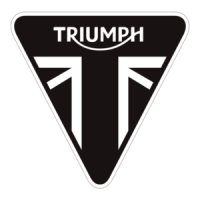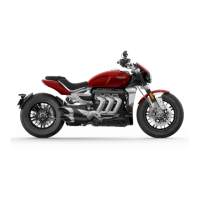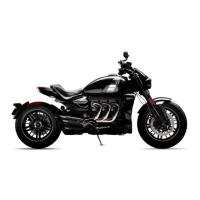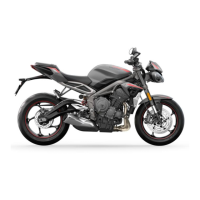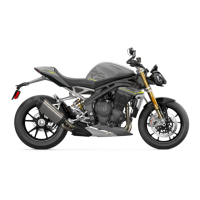35
General Information
Check:
Fuel: Adequate supply in tank, no fuel leaks
(page 29).
Engine Oil: Correct level on dipstick. Add
correct specification oil as required. No leaks
from the engine or oil cooler (page 58).
Final Drive: No oil leaks (page 76).
Tyres/Wheels: Correct inflation pressures
(when cold). Tread depth/wear, tyre/wheel
damage, punctures etc. (page 77).
Nuts, Bolts, Fasteners: Visually check that
steering and suspension components, axles,
and all controls are properly tightened or
fastened. Inspect all areas for loose/damaged
fixings.
Steering Action: Smooth but not loose from
lock to lock. No binding of any of the control
cables (page 72).
Brakes: Pull the brake lever and push the
brake pedal to check for correct resistance.
Investigate any lever/pedal where the travel is
excessive before meeting resistance, or if
either control feels spongy in operation
(page 68).
ABS: Ensure that the ABS warning light does
not remain illuminated at speeds above
6 mph (10 km/h) when moving off
(page 24).
Brake Pads: There should be more than
1.5 mm of friction material remaining on all
the pads (page 69).
Brake Fluid Levels: No brake fluid leakage.
Brake fluid levels must be between the MAX
and MIN marks on both reservoirs (page 70).
Front Forks: Smooth action. No leaks from
fork seals (page 74).
Throttle: Throttle grip free play 2 - 3 mm.
Ensure that the throttle grip returns to the
idle position without sticking (page 65).
Clutch: Smooth operation and correct cable
free play (page 67).
Coolant: No coolant leakage. Check the
coolant level in the expansion tank (when the
engine is cold) (page 62).
Electrical Equipment: All lights and horn
function correctly (page 25).
Engine Stop: Stop switch turns the engine
off (page 38).
Stands: Return to the fully up position by
spring tension. Return springs not weak or
damaged (page 32).
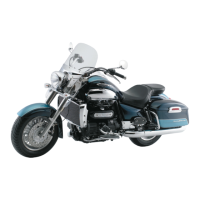
